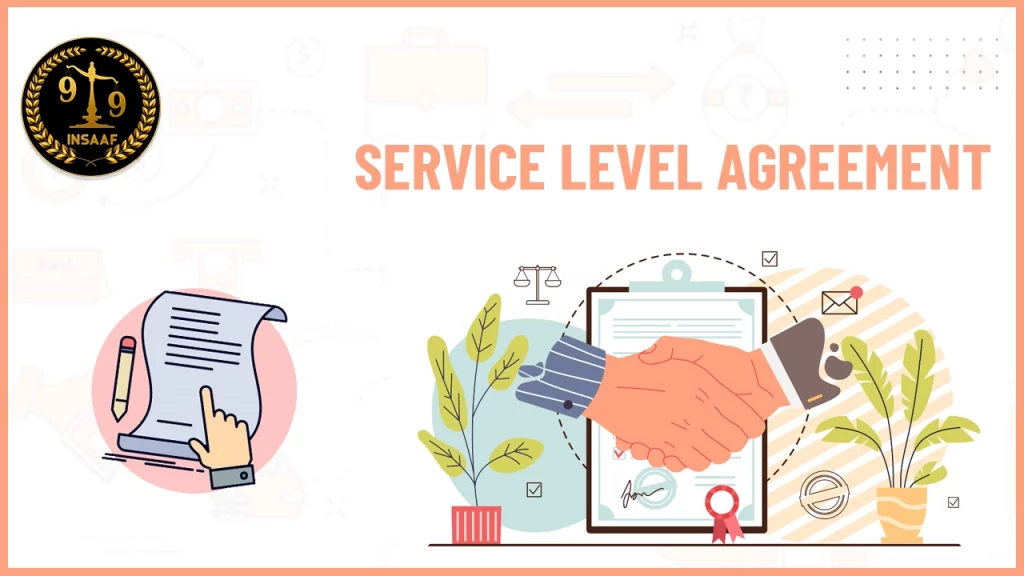

Online Legal Advice from Insaaf99® Online Lawyer Consultation in India


Online Legal Advice from Insaaf99® Online Lawyer Consultation in India
Service Level Agreement Overview : A legal document that outlines a commitment between a service provider and a client, including details of the service, the standards the provider must adhere to, and the metrics to measure the provider's performance is referred to as a Service Level Agreement or SLA in short.
An SLA can be produced in three different kinds, all of which are explained below:

Although network service providers are thought to have developed SLAs, they are now utilised in numerous IT-related fields.
IT service providers, managed service providers, cloud computing, and internet service providers are all examples of industries that establish SLAs.
SLAs are entered into by corporate IT organisations, particularly those that have adopted IT service management, with their in-house customers, or users in other enterprise departments.
An IT division makes a SLA so that its administrations can be estimated, supported and maybe contrasted and those of reevaluating sellers.
The following are a few of the many reasons for why your organisation needs a SLA:
The major advantages of implementing Service Level Agreements include the following:
1. Further develops client support: the amount of time it takes to resolve a case, will dramatically decrease.
2. Communicates more easily: Two ways will be available to the staff of the service provider to set customer expectations, that is, your employees. In the first place, they can look at the SLA document to learn how priorities are determined and how long the service provider has to resolve the case. Second, they can inform customers of the actual performance of the support organisation by referring to periodic performance reports. The typical resolution time is significantly shorter than the maximum time goal.
3. Negotiated and accepted by both parties: All customers will be more likely to accept the SLA because it was created jointly by customers and the service provider.
4. Lays out procedures: Customers and the provider of the service should agree on and follow procedures. At the point when there is an inquiry or conflict, the SLA can be utilised as a composed reference.
6. Establishes customer service standards: This is an effective tool that tells the customer how the service provider will provide support and what the customer needs to do to get it. It affirms that the specialist organisation is fit to be estimated to give the client a report on the exhibition.
As a result, the primary focus of the Service Level Agreement is on the customer's output as a result of the service provided.
A crucial clause of SLA in which the service provider promises to compensate the customer company for any breaches of its warranties is the indemnification clause.
As a result of indemnification, the provider will be obligated to reimburse the customer for any third-party legal fees incurred as a result of its breach of the warranties.
This provision is likely to be absent if you use a service provider-provided standard SLA; Although the service provider may require additional negotiation on this point, you can ask your in-house counsel to draft a straightforward provision to include it.
When vendors fail to meet minimum performance standards, SLAs include agreed-upon penalties known as service credits.
When SLAs aren't met, the provider and customer agree to "put at risk" a certain percentage of monthly fees, typically equal to the vendor's profit margin. Without being overly punitive, this strategy aims to incentivize provider performance.
Top tier IT associations try not to involve SLA arrangements as discipline for their IT accomplices and use SLA measurements as an opening for useful discussions around execution, needs, and the future course of the commitment or relationship.
A shared game plan of the provisions of your concurrence with your specialist Organization is a significant part in the making of a positive encounter for every elaborate party.
Any specialist Organisation you pick ought to be more than satisfied to make a Help Level Concurrence with you.
By understanding what to search for in your arrangement and drafting clear assumptions at the beginning of your client/accomplice understanding, you can guarantee your Organization's general benefits are dependably the first concern and augment the worth of your business connections.
If you have any desire to find out about help level arrangement, contact Insaaf99.com
| Read More : FAME India Scheme 2023 |
| Read More : Indian law for second marriage without divorce |
| Read More : Environment Protection Act |